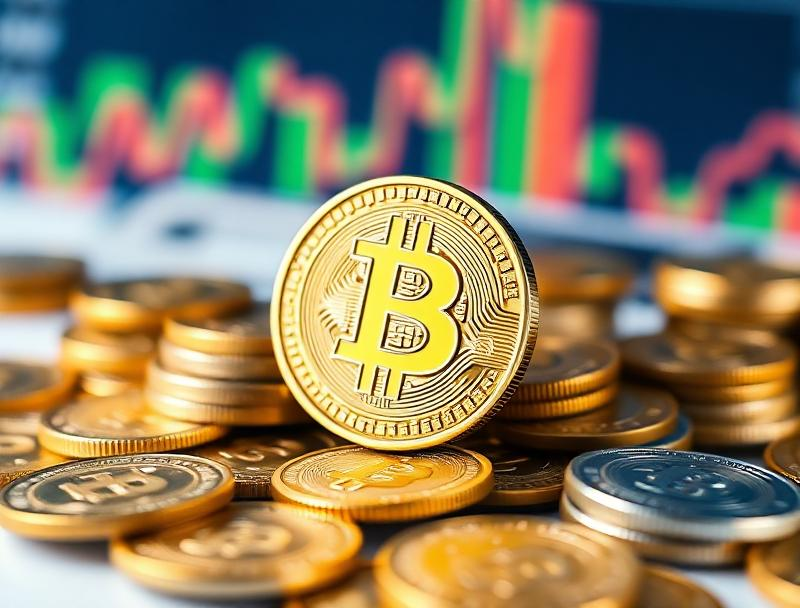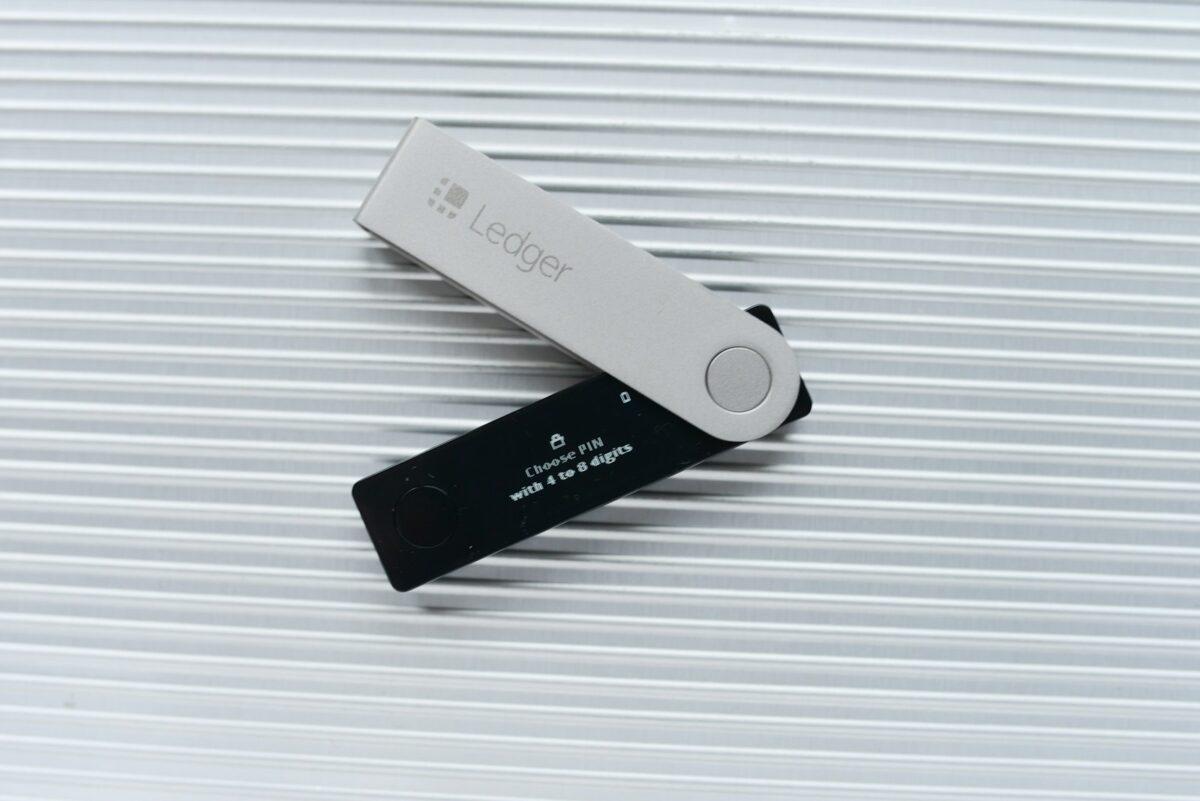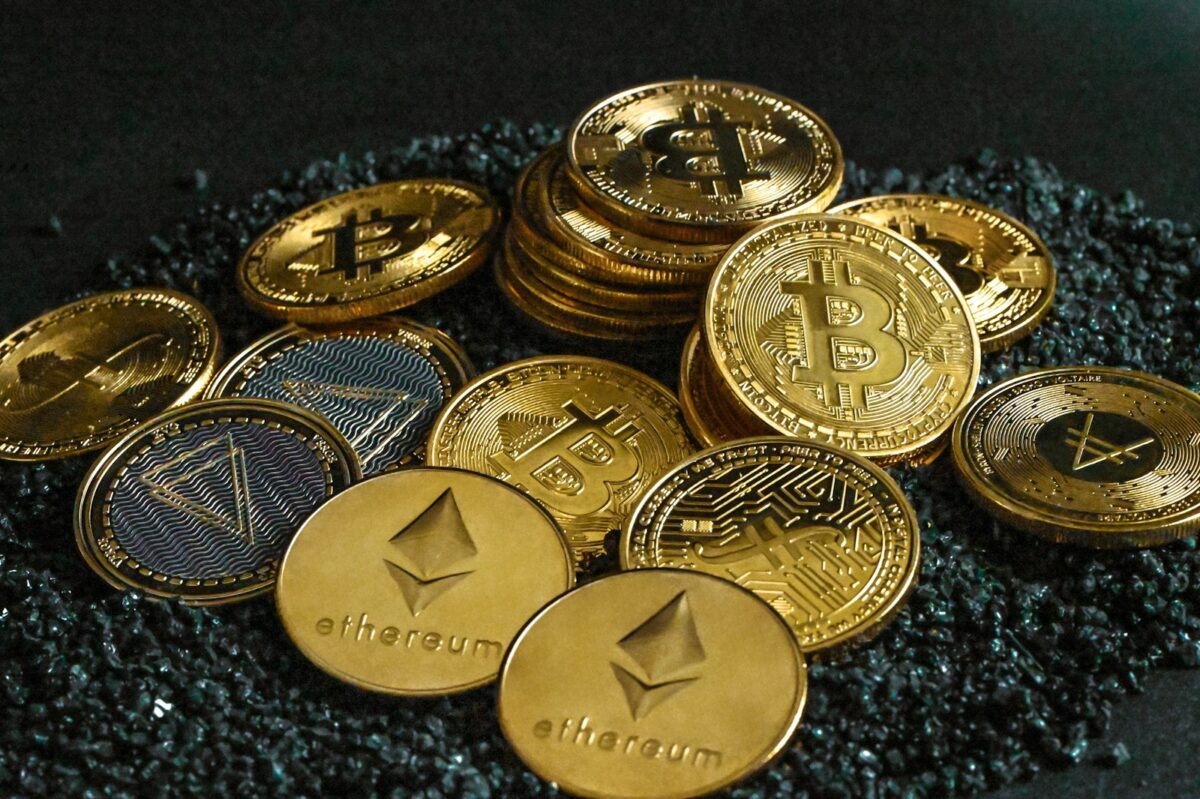
Payment methods for crypto

Cash remains a straightforward choice for acquiring digital assets through peer-to-peer exchanges, allowing direct transfers without intermediaries. This approach ensures anonymity and immediate settlement, but requires trust between parties and physical presence.
Credit cards provide rapid access to cryptocurrencies via numerous online platforms. Despite higher fees and occasional verification delays, card payments offer convenience and widespread acceptance, making them suitable for newcomers seeking quick entry.
PayPal integration with select crypto services introduces an alternative that combines the familiarity of digital wallets with seamless fiat-to-asset conversion. Users benefit from buyer protection policies and ease of use, though availability depends on jurisdictional regulations.
Bank transfers enable secure and traceable fund movement before converting into tokens. While slower than card or PayPal options, wire transfers typically support larger amounts with lower transaction costs, appealing to investors prioritizing security over speed.
Peer-to-peer networks expand possibilities by connecting buyers and sellers directly across various payment channels. Exploring these decentralized marketplaces uncovers diverse alternatives beyond traditional banking or card systems, fostering experimental discovery in transactional dynamics.
Exploring payment options to acquire and transfer cryptocurrencies
To begin acquiring digital assets, selecting suitable channels for exchange plays a key role. Traditional bank transfers remain popular due to established infrastructure and regulatory clarity. Users initiate fiat-to-crypto conversions by wiring funds from their bank accounts to exchange platforms that accept such deposits. This approach offers security and traceability but can involve delays depending on banking hours and cross-border processes.
Credit and debit card transactions provide faster access to tokens, often completing within minutes. Many exchanges partner with card networks to allow instant purchases; however, fees are typically higher compared to wire transfers. It is important to confirm whether the issuing bank supports cryptocurrency-related operations, as some institutions restrict these payments.
Peer-to-peer networks and alternative cash-based transactions
Peer-to-peer trading platforms enable direct exchanges between users without intermediaries, enhancing privacy and reducing costs. Buyers can negotiate terms and choose preferred funding options such as local cash deposits or bank transfers. For example, LocalBitcoins facilitates in-person cash deals where sellers receive physical money before releasing digital coins into the buyer’s wallet.
Utilizing cash-based avenues introduces unique challenges related to security and verification but remains relevant in regions with limited banking access or stringent regulations. Escrow services embedded in P2P protocols mitigate risks by holding assets until conditions are met, promoting trust during transfers.
The role of PayPal and emerging digital wallets in crypto acquisition
PayPal, a widely adopted global payment system, recently integrated cryptocurrency buying features within its platform. Users can convert fiat balances directly into supported tokens without external wallets or exchanges. This convenience attracts newcomers but comes with limitations on withdrawals to private wallets, restricting control over assets transferred outside PayPal’s ecosystem.
Diversifying acquisition routes through various options, including traditional cards, bank transfers, P2P trades, or services like PayPal allows experimentation under different risk profiles. Investigating transaction times, fee structures, geographic availability, and compliance requirements fosters informed decisions tailored to individual objectives.
Choosing Wallets for Payments
Selecting an appropriate wallet requires analyzing supported transfer types, security protocols, and integration with traditional financial instruments such as bank accounts and credit cards. Wallets that enable seamless linkage to bank infrastructure facilitate easier conversion between cash and tokens, simplifying the process of sending value through established channels. This connection can significantly reduce friction during transactions, especially when converting funds from fiat currencies to blockchain-based assets or vice versa.
Peer-to-peer transfer capabilities often define a wallet’s usability in direct exchanges without intermediaries. Wallets optimized for peer-to-peer interactions typically implement encrypted communication layers and multi-signature authorization schemes to safeguard transfers. Evaluating these technical aspects alongside available options like card payments enhances the understanding of transaction speed, cost efficiency, and traceability within decentralized environments.
Technical Evaluation of Wallet Integration
The architecture of wallets supporting credit card payments frequently involves third-party processors adhering to PCI DSS standards, ensuring compliance with regulatory frameworks governing sensitive payment data. Such wallets incorporate tokenization techniques that replace card details with cryptographic tokens, minimizing exposure during tokenized transfers. Conversely, wallets relying on bank transfers often utilize APIs connected to Automated Clearing House (ACH) or SWIFT networks, enabling cross-border fund movement while maintaining transparent audit trails.
Analyzing wallets designed for cash-based top-ups reveals diverse implementations ranging from voucher systems to retail partnerships where physical money converts into digital balances. These options expand accessibility in regions lacking robust banking infrastructure but introduce challenges related to reconciliation delays and anti-money laundering (AML) compliance enforcement. Case studies demonstrate how hybrid wallet solutions balance convenience with stringent verification processes.
- Hardware wallets: Offer offline storage preventing unauthorized access during electronic card or bank-linked operations.
- Software wallets: Provide flexibility for rapid peer-to-peer transfers yet require rigorous security hygiene due to exposure risks.
- Custodial wallets: Facilitate instant credit transfers through centralized entities but involve trust trade-offs impacting user autonomy.
Evaluations based on latency metrics reveal that wallets integrating direct bank settlement mechanisms outperform those depending solely on blockchain confirmations when handling high-frequency transactions. However, this advantage must be weighed against the potential central points of failure introduced by external financial institutions. Experimentation with layered wallet configurations combining on-chain asset management and off-chain credit facilitation presents promising avenues toward optimizing transactional throughput while preserving decentralization principles.
Encouraging exploratory testing with different combinations–such as pairing hardware devices supporting secure card payments and software interfaces enabling peer-to-peer token swaps–can illuminate practical workflows suited to varied use cases. Observing confirmation times, fee structures, and dispute resolution protocols across these configurations fosters a nuanced comprehension essential for making informed selections tailored to specific operational demands or geographic constraints.
Using Credit Cards Safely
Utilizing credit cards for transactions involves specific risks that require careful mitigation. One effective approach is to avoid direct transfers from a credit card to unverified platforms, as these can expose sensitive financial data. Instead, leveraging intermediary services such as PayPal or peer-to-peer networks with established reputations can reduce exposure by acting as buffers between the card and the recipient. These alternatives provide added layers of authentication and fraud protection, limiting unauthorized access to your cash flow.
When selecting transaction options involving credit instruments, it is advisable to verify the security protocols of the service provider. This includes two-factor authentication, encryption standards compliant with PCI DSS (Payment Card Industry Data Security Standard), and real-time monitoring of transaction anomalies. Employing multiple verification steps reduces the probability of fraudulent usage and enhances control over outgoing funds, especially when converting digital assets into fiat currencies or vice versa.
Technical Strategies for Safe Use
A common technical safeguard includes restricting credit card usage through virtual cards or disposable numbers generated specifically for single-use transactions. These virtual cards limit potential losses by isolating the primary account details from external entities during transfers. Peer-to-peer exchanges supporting escrow mechanisms also improve security by holding funds until both parties fulfill agreed conditions, preventing premature release of cash or tokens.
Analyzing transaction flows reveals that combining multiple payment routes–such as initial funding via credit card followed by internal transfer through trusted wallets–can diversify risk vectors. For example, initiating a transfer using PayPal linked to a credit source before moving funds peer-to-peer minimizes direct exposure of the underlying card data. Continuous monitoring tools leveraging AI-driven anomaly detection further secure these processes by alerting users to suspicious activities in near real-time.
Bank Transfers and Crypto
Using bank transfers remains one of the most reliable options to convert traditional cash into digital assets. Banks provide a secure infrastructure for transferring funds directly from credit or debit cards, as well as from personal accounts. Unlike instant card payments or services like PayPal, bank transfers can handle larger sums with fewer restrictions, making them suitable for substantial cryptocurrency acquisitions.
Technically, the process involves initiating a wire transfer or SEPA payment that routes fiat currency through banking rails before reaching exchange platforms. These platforms then credit the user’s account balance, enabling subsequent trades. This approach avoids the volatility and fees often associated with card-based transactions while benefiting from established compliance frameworks embedded in banking networks.
Technical Nuances of Bank-Based Transactions
Bank transfers operate on legacy systems such as SWIFT or domestic clearing houses, which introduce latency ranging from several hours up to multiple business days depending on geographic regions. For example, European customers using SEPA experience generally faster clearance times compared to international SWIFT transfers originating in Russia or the United States. Additionally, transaction fees vary widely; while some banks charge fixed fees per transfer, others apply percentage-based commissions linked to transferred amounts.
The integration of blockchain technology within bank transfer systems is currently experimental but promising. Hybrid models allow users to initiate fiat deposits via traditional banking channels which then trigger automated conversions into cryptocurrencies using smart contract protocols on decentralized exchanges. This synergy enhances transparency and reduces manual reconciliation overhead for financial institutions exploring crypto custody solutions.
- Case Study: A European crypto exchange partnered with local banks offering near-real-time EUR deposits via instant SEPA payments combined with layered AML/KYC controls ensuring regulatory compliance without compromising transaction speed.
- Example: In Russia, several banks have trialed direct ruble-to-crypto gateways allowing users to fund wallets directly through online banking portals utilizing credit or debit cards linked to their accounts.
Comparing bank transfers with alternative channels like PayPal reveals trade-offs between convenience and control. While PayPal supports fast funding through linked cards, it imposes higher conversion fees and restricts withdrawal options for cryptocurrency purchases. Conversely, bank wires require more time but offer greater flexibility in managing large volumes of cash securely before converting into tokens or coins on trading platforms.
The decision matrix for selecting an appropriate funding mechanism should consider factors such as transaction size, required settlement speed, fee structure, and jurisdictional regulations affecting both banks and crypto service providers. Exploring technical documentation available from major exchanges often provides detailed insights into supported currencies, transfer limits, and expected timelines enhancing user confidence during onboarding processes.
Mobile Payment Apps Setup
To initiate a secure transfer via mobile apps, users must first link their bank accounts or credit cards to the platform. This setup allows for seamless conversions between cash and digital balances, enabling transactions without physical currency. Most applications support direct integration with major banks, offering instant verification through micro-deposits or secure API connections. Establishing this link is critical for ensuring reliable funding sources and avoiding delays in peer-to-peer exchanges.
Adding cards–either debit or credit–is another common step that enhances transaction flexibility. Unlike cash withdrawals, card-based payments often incur processing fees but provide faster clearing times. PayPal stands out as a versatile intermediary supporting both card and bank transfers within mobile ecosystems. Users benefit from its layered authentication mechanisms and buyer protection policies, which increase trust during transfers between unfamiliar parties.
Technical Considerations in Setup
When configuring mobile applications for monetary transfers, understanding tokenization protocols used to secure card details is invaluable. Tokenization replaces sensitive data with unique identifiers during communication with payment gateways, reducing exposure risk in case of breaches. Furthermore, many platforms implement two-factor authentication linked to biometric sensors on smartphones, improving authorization reliability beyond simple password entry.
Peer-to-peer operations require particular attention to network latency and confirmation times when transferring funds directly between users. Some apps adopt blockchain-inspired ledgers for recording transactions transparently while maintaining privacy through cryptographic methods. This approach contrasts traditional centralized systems reliant on bank intermediaries and supports near-instantaneous settlements across borders without involving physical cash handling.
The diversity of supported channels–ranging from direct bank debits to card networks–allows users to tailor their experience according to convenience and cost-efficiency priorities. Monitoring transaction histories within the app helps detect anomalies early while maintaining compliance with regulatory frameworks tied to anti-money laundering protocols. Experimenting with small-value transfers initially can build confidence in the system’s responsiveness before scaling operations.
Investigating backend infrastructures reveals varying reliance on centralized servers versus decentralized ledger technologies influencing settlement speed and transparency levels. Integrating multiple transfer avenues encourages broader adoption but introduces complexity requiring robust error-handling routines embedded into application design. Continuous updates addressing emerging vulnerabilities underscore the dynamic interplay between financial innovation and cybersecurity resilience within mobile environments.
Conclusion: Navigating the Future of Crypto Transaction Gateways
The integration of bank and credit card infrastructures with blockchain-based systems reveals a multi-faceted ecosystem for value transfer. When exploring alternatives to traditional cash or PayPal-like intermediaries, peer-to-peer solutions demonstrate increased autonomy while still requiring seamless interoperability with fiat gateways. This hybridization enables users to select options balancing convenience, cost-efficiency, and security based on transaction parameters and regulatory environments.
Emerging decentralized protocols are beginning to support near-instant settlements that bypass legacy banking delays, yet banks remain critical touchpoints for converting tokenized assets back into spendable currency via card networks. Advanced cryptographic schemes embedded in smart contracts allow programmable transfers that can trigger conditional releases, expanding beyond mere store-of-value functions toward complex financial instruments.
Key trends shaping the next generation of transactional conduits include:
- Multi-rail integration: Combining bank wires, credit systems, and blockchain channels within unified platforms enhances user choice without sacrificing compliance.
- Tokenized card issuance: Bridging virtual cards backed by crypto-assets facilitates seamless online commerce and micro-transactions with minimal friction.
- Peer-to-peer liquidity pools: Decentralized exchanges and atomic swaps reduce reliance on centralized custodians, promoting censorship resistance.
- Programmable transfers: Smart contracts enforce automated workflows, enabling escrow services and conditional disbursements previously unfeasible through conventional banking.
The future trajectory points toward increasingly modular architectures where traditional financial rails coexist and interoperate with blockchain ecosystems. Researchers should investigate cross-chain protocols that optimize settlement speed without compromising security or regulatory compliance. Practical experimentation with layered solutions combining card payments, direct bank integrations, and peer-to-peer transfers will illuminate efficient pathways for mass adoption.
This ongoing evolution invites deeper exploration into how cryptographic guarantees can enhance trust in payment settlements traditionally dominated by centralized intermediaries like PayPal or banks. Understanding these hybrid frameworks equips developers and analysts to design robust transactional infrastructures that meet diverse user needs while anticipating regulatory shifts.


